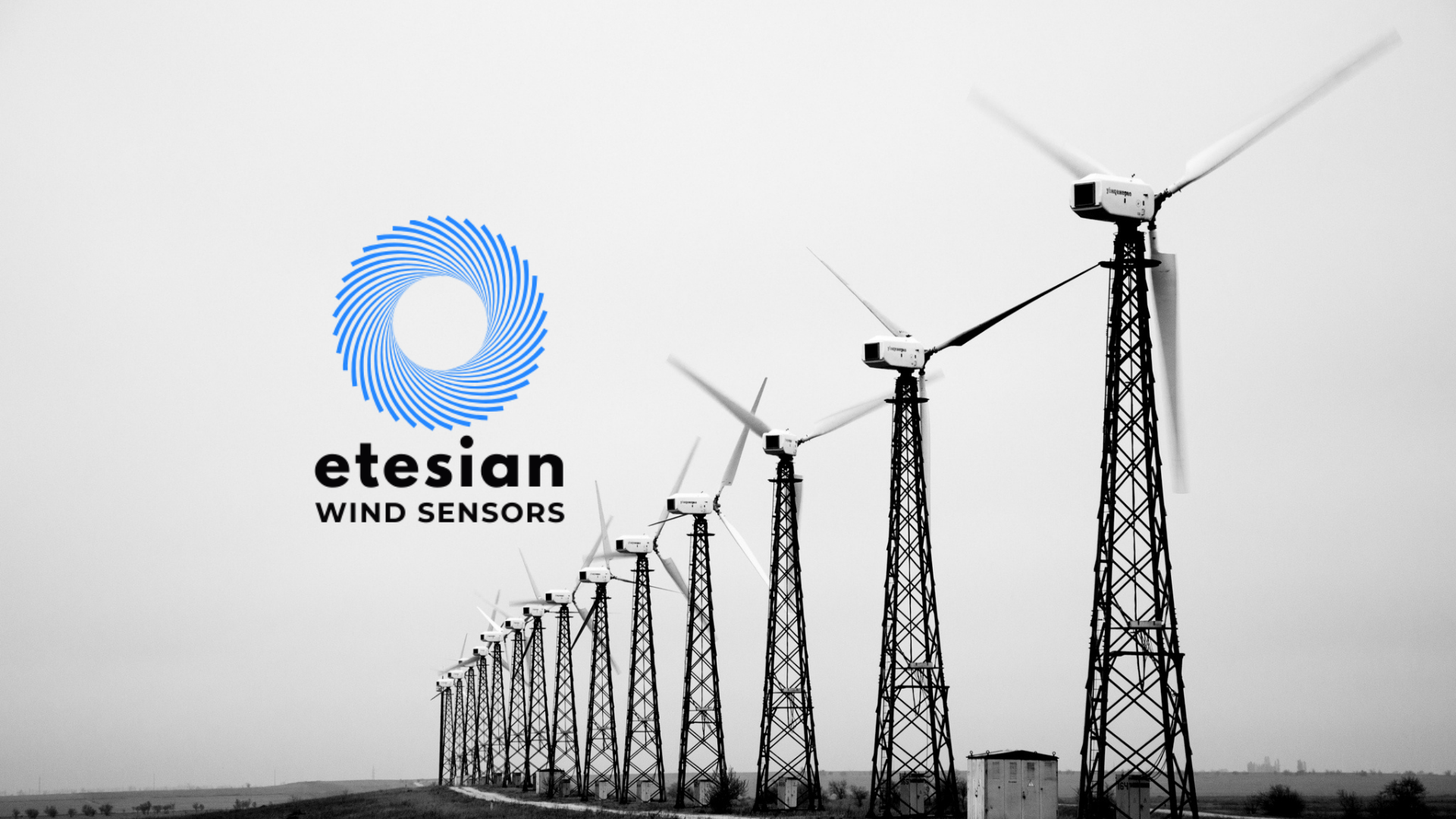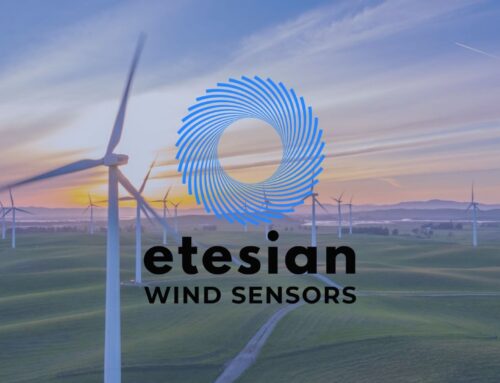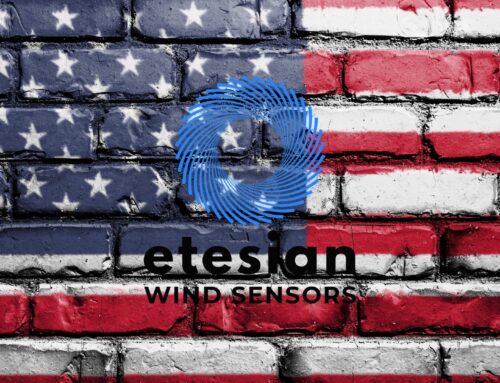For Bill Stein, a senior research fellow at the Renewable Energy Research Laboratory in the Mechanical and Industrial Engineering Department at the University of Massachusetts Amherst, wind is more than a 9-to-5 job.
On his own time, Stein has developed and patented a self-powered and wireless anemometer to measure wind speed.
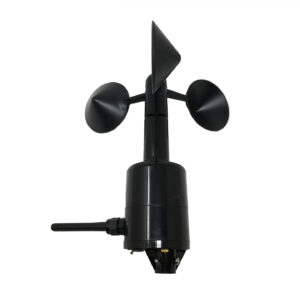
Above is Etesian’s most popular wireless, wind-powered anemometer, the Model 101-916.
“Every once in a while a simple idea for sailing technology comes along and one wonders why they didn’t think of that, or in my case why I didn’t think of it years ago,” says Stein. “I had been working as an engineer both in wind power and instrument design for over 30 years. A couple of years ago I had the opportunity to develop a battery-powered weather station which monitored wind speed and direction, barometric pressure, relative humidity and temperature. With a high-powered RF transmitter it could transmit its weather readings to a receiver and base station up to 10 miles away.”
Later, Stein realized that a simpler device with a couple of important features would have a more widespread application. “I had seen small wireless weather stations, usually requiring batteries or a solar panel to operate,” he says. “But what if a wind sensor could be wholly self-contained, needed no batteries, and wirelessly radio the wind speed data back to a remote receiver? It seemed ideal.”
A cup anemometer is the tiniest of wind-powered generators, so Stein figured that just a few miles per hour of wind speed would provide plenty of energy to turn a generator and run a small bit of modern electronics, including a wireless transmitter.
According to Stein, anemometers are ideally placed at as high a location on a mast or tower as is practical. “Once installed, one never wants to revisit the installation again,” he says. “On the boat mast, on the roof top or up a tower, it’s a job requiring removal of rigging or climbing or both.”
In the case of a wired sensor, the sensor cable must be attached, routed and secured. Holes need to be drilled, the wires fished through, and then the holes caulked to properly finish the job.
“It seemed this new concept of a self-powered sensor eliminated all these drawbacks,” says Stein, with the added bonus of protecting against damage to expensive electronics from lightning strikes.
After about a year of development, the wireless anemometer “is ready for prime time,” says Stein. The anemometer’s innards consist of two highly refined components: a brushless generator which has zero impact on the free turning requirements of the wind cups and an ultra-low power transmitter and signal conditioner. The transmitter operates at 900 MHz, the band the Federal Communications Commission set aside for consumer and industrial products.
“This anemometer starts turning in the slightest of breezes, as low as 1½ miles per hour,” says Stein. “Very little energy is demanded of the generator. The very latest in low-power-consuming computer chips along with careful attention to low-power-circuit design were utilized to cut the power consumption to a minimum.”
The device can work in two modes. At less than 5 knots the anemometer will run in ultra-low power mode and transmit new data every 20 seconds. With increasing winds, the anemometer is capable of transmitting data more frequently up to once per second.
There are three connections to the receiver: the power cord, the serial cable to the PC and an antenna connector. For shorter range applications, up to 140 feet, a small three-inch stick antenna similar to that on the sensor is suitable. For larger distances a directional antenna may be used. Currently the receiver has two types of outputs. It has a serial port for connection to a computer, with software to display (and data log if desired) the incoming wind data. It also has a voltage output which can be fed to meter or bar graph for a convenient visual display. For those interested in measuring the wind’s direction, the anemometer is available with a wind vane option for transmitting the direction data as well, he says.
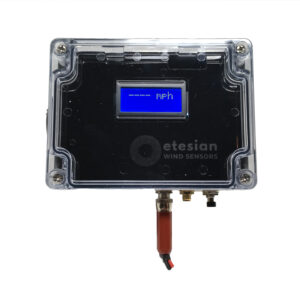
Etesian’s most popular receiver display is the Model 201-916. This receiver is often paired with the Model 101-916 Anemometer.
“Once clamped in place at the top of the mast, no cables need to be routed, and no batteries or solar panels are required,” Stein says. “It is sufficiently rugged to withstand bird landings, although birds seldom land on moving objects such as wind cups.”
With patent in hand, Stein recently formed Etesian Technologies to market and manufacture his new products.
This article about the founding of Etesian Technologies was originally published on April 27, 2009 on the University of Massachusetts Amherst website. After nearly a decade of business, Etesian Technologies was bought by Bridge Analyzers in October of 2020. Bill Stein continues to advise the business as an emeritus member.

